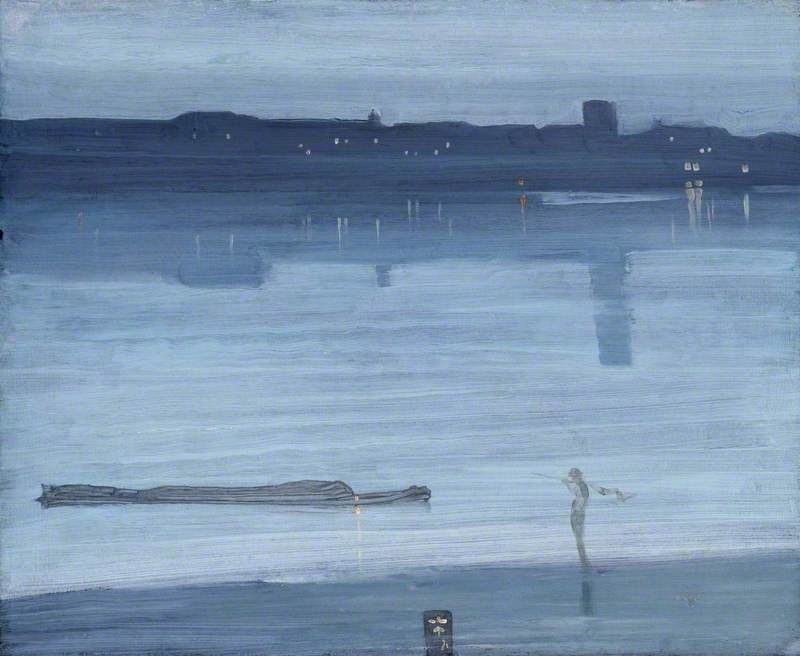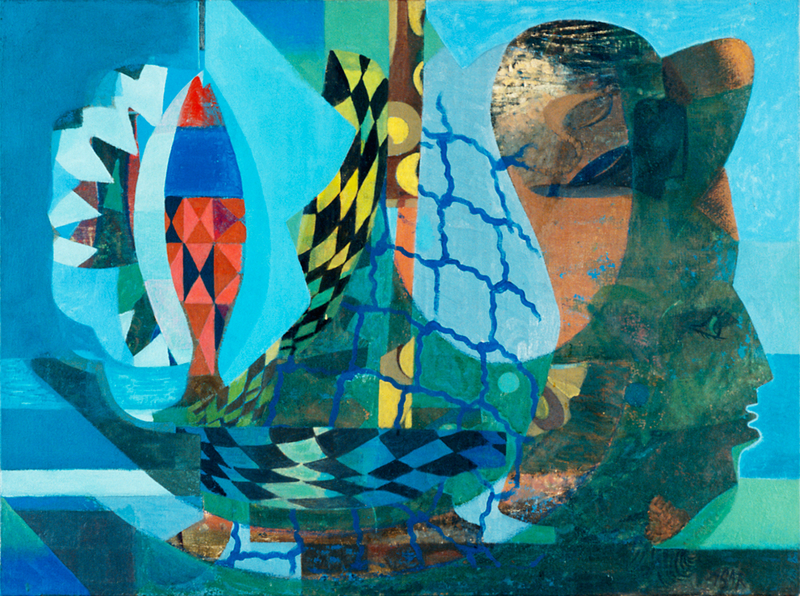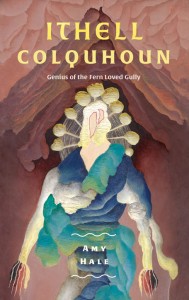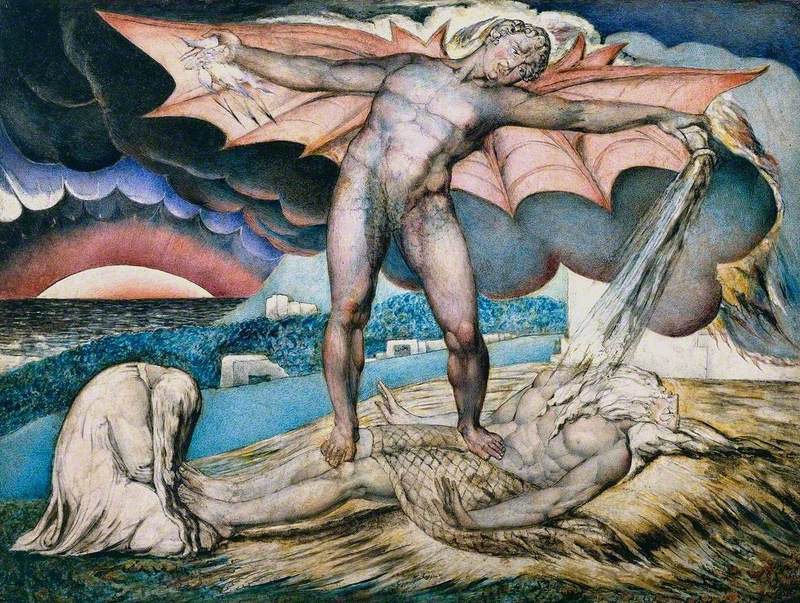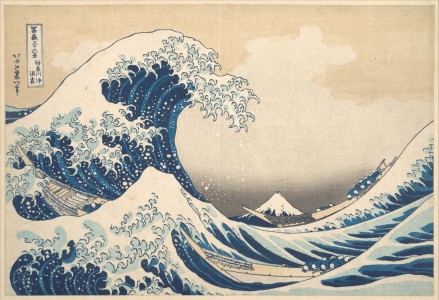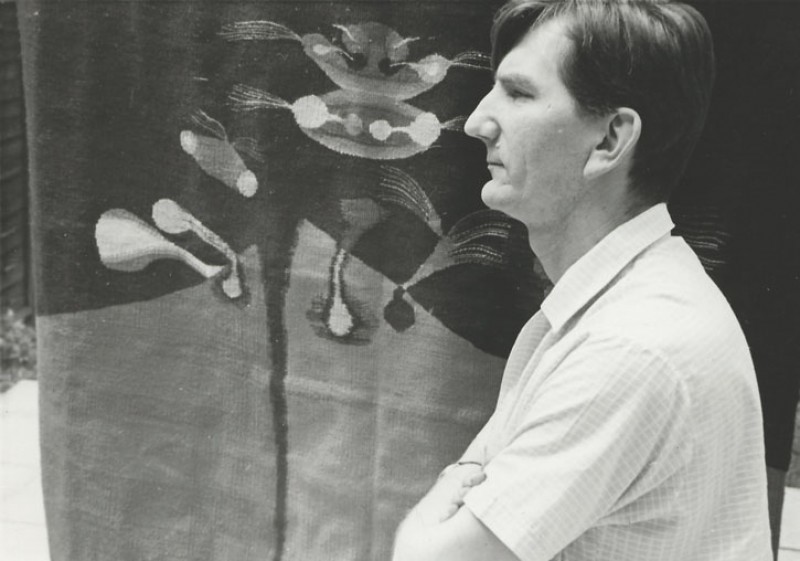Over six short but feverishly creative years, the young Lithuanian composer and artist Mikalojus Konstantinas Čiurlionis produced an exceptional body of work that has elevated him to the status of national hero in his home country, yet he comes as a revelation and relative unknown to those of us more familiar with the traditional art history canon. Today, his music is played by orchestras the world over, but his paintings have rarely left Lithuania. This makes this Dulwich Picture Gallery exhibition even more visionary in bringing such a deserving artist to an international audience.

Image credit: courtesy of M. K. Čiurlionis National Museum of Art, Lithuania
Sparks III
1906, tempera on paper by M. K. Čiurlionis (1875–1911)
Born in Varėna in southern Lithuania in 1875, Čiurlionis' father – the surname is pronounced 'Churloniss' – was a church organist and his mother had a deep knowledge of Lithuanian songs and legends.
Music and folklore were central to family life, and consequently for Čiurlionis and his painting. His art is profoundly symbolic, often hovering on the edge of abstraction, deeply musical and engaged with the idea of our relationship with the celestial and the cosmos. He transports us to other worlds, creating fantastical visions that embrace the mythology of his beloved Lithuania, while absorbing the influences of the world around him – from new philosophies and religions to scientific discoveries; from the ways of the past to the rapidly changing twentieth century.

Image credit: courtesy of M. K. Čiurlionis National Museum of Art, Lithuania
Serenity
1904–1905, pastel & charcoal on paper by M. K. Čiurlionis (1875–1911)
In considering Čiurlionis, it is important to understand the geographical and political context in which he operated. In summary, late eighteenth-century Lithuania was still connected to Poland, but after numerous partitions, it came under the control of Russia, despite many uprisings by Poles and Lithuanians. During this period the Lithuanian language and Latin alphabet were banned in junior schools. It was also forbidden to print in Lithuanian, so many books were produced abroad and smuggled back into the country.
In the 1860s, following a famine, there was a mass exodus to the US, and between 1868 and 1914, 635,000 people – approximately 20% of the population – left the country. However, the strength of the distinctive Lithuanian culture and customs, its folklore and mythology, was preserved, largely by the peasant classes. Over time, a nationalist revival grew, with Čiurlionis himself becoming a great champion of independence from the 1890s. The Russian Revolution of 1905 saw the country demanding independence and concessions were made, such as allowing the use of the native language. It was not until 1918, after the First World War, that Lithuania's Act of Independence was ratified.
Čiurlionis was a founder member of the Society of Lithuanian Art in 1907. In 1908, he wrote in the Lithuanian-language newspaper Viltis (Hope) about his dream for a 'House of the Nation' – a museum, concert hall and library of Lithuanian arts and culture – promising to donate his entire collection. It is that museum, the M. K. Čiurlionis National Museum of Art in Kaunas, that we must be grateful for allowing us to bring the artist's work to Dulwich. Although commercially unsuccessful in his own brief lifetime, after his death in 1911 at the age of 35, the Society of Lithuanian Art wrote: 'In the paintings of the artist it is not only his powerful spirit that is manifested; they also reflect the soul of the whole nation.'

Image credit: courtesy of M. K. Čiurlionis National Museum of Art, Lithuania
M. K. Čiurlionis
1908, photograph by S. Fleury
Between 1894 and 1899, Čiurlionis, a talented young pianist and organist, travelled to the Conservatorium in Warsaw where he studied music, and then to the Conservatorium in Leipzig from 1901 to 1902. It was not until 1899 that he took up drawing and painting, enrolling in the Warsaw Art Academy in 1904 when he was 29 years old, and remaining there until 1906. After 1906, painting came to dominate his output until he died in 1911, although he remained an active composer.

Image credit: courtesy of M. K. Čiurlionis National Museum of Art, Lithuania
Fairy Tale (Fairy Tale of Kings)
1909, tempera on paper by M. K. Čiurlionis (1875–1911)
In 1387, Lithuania became the last European country to adopt Christianity. Previously it had embraced paganism and pantheism, worshipping the natural world. The legacy of these beliefs was perpetuated in Lithuanian mythology and folklore, strongly influencing Čiurlionis' art, as evidenced in works such as Rex, where a God-like figure, or Fairy King, appears to create 'man'. These early depictions of 'Rex', the omnipotent creator, spirit and protector, will go on to populate many of Čiurlionis's paintings.

Image credit: courtesy of M. K. Čiurlionis National Museum of Art, Lithuania
Rex
1909, tempera on canvas by M. K. Čiurlionis (1875–1911)
Though not widely travelled, the artist's studies in Warsaw and Leipzig, and later his visits to the Munich, Vienna and St Petersburg museums, would have opened his eyes to artistic developments. In his work, much as in Symbolist painting at the time, everything had another value or meaning, rich with symbols, and codes and. He was interested in depicting spiritual value, emotion and the world of dreams – landscapes of mood.
These concerns aligned with Čiurlionis' interest in Eastern philosophy, theosophy and the ancient Egyptian cult of the sun, which was also characteristic of Polish society at the beginning of the twentieth century. Čiurlionis was inspired by the writings of Kant, Schopenhauer, Nietzsche, Dostoevsky and Tolstoy and fascinated by the work of French astronomer Camille Flammarion. It is also clear to see in his paintings that he would have been familiar with the Japanese woodcuts popularly collected at the time, as well as the 'musical' tonal paintings of Whistler, Kandinsky and others.
Early in his career, Čiurlionis identified the power of the painting cycle where he was able to tell stories that allowed him to reflect the passage of time. Of his Creation of the World series, he wrote: 'This is the Creation of the World, not of our world according to the Bible, but another, fantastic world.'
Together, the 13 works explore his version of celestial and earthly construction. Despite his protestations, they are clearly associated with the Bible's creation story while referencing ancient texts such as the Indian Vedas, as well as showing knowledge of new theories of evolution and his interest in writers on the subject of our relationship with nature and the universe.

Image credit: courtesy of M. K. Čiurlionis National Museum of Art, Lithuania
Creation of the World III
1905–1906, tempera on paper by M. K. Čiurlionis (1875–1911)
Throughout his work, Čiurlionis used symbols and shapes to create a shorthand of meaning, not to obscure or complicate but to enable our understanding and to help us to 'feel' his paintings – his ultimate goal: 'If anyone approaches my works and experiences a rising wave of feeling, he will not turn away.'
His body of work has an intensity of vision and, at its heart, aims to transcend different worlds, to reach higher, mystical planes where art and music, abstraction and figuration, light and dark, calm and chaos, nature and the spiritual, exist in harmony.
Kathleen Soriano, independent arts curator, writer and television broadcaster, known for Portrait and Landscape Artist of the Year on Sky Arts
'M. K. Čiurlionis: Between Worlds' at Dulwich Picture Gallery, London is open until 12th March 2023
